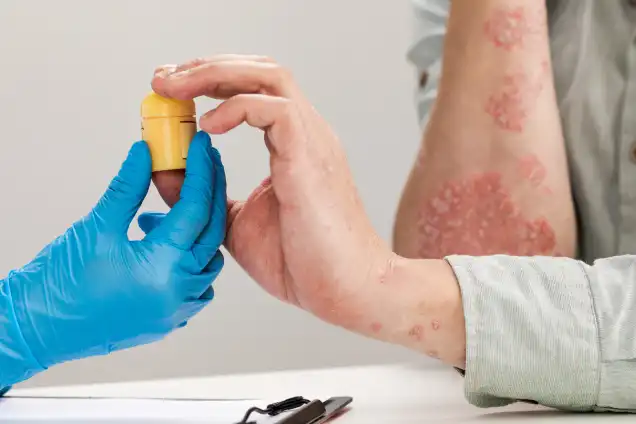
Lichen planus is a disease that affects the skin, hair, and nails. Sometimes involving mucus membranes and genitals. It is characterized by shiny, flat-topped, polygonal, purplish skin lesions, often causing itching. It almost always heals leaving black marks.
Lichen planus is most common in adults aged 30-60 however, any age may be affected . It affects both genders equally, though some studies suggest a slightly higher prevalence in females. The exact cause is unknown, but it is considered to be an autoimmune disorder that may be triggered by certain medications, infections (especially hepatitis C), or allergens.
Lichen Plano Pilaris, primarily affects scalp.
Lichen planus is believed to involve a T-cell mediated autoimmune reaction against basal keratinocytes, though the exact antigen is not identified. Stress, genetic predisposition, and environmental factors may contribute.
Diagnosis is primarily clinical but can be confirmed with a skin biopsy showing characteristic histological findings, including a band-like lymphocytic infiltrate at the dermoepidermal junction, basal cell degeneration, and Civatte bodies.
Treatment focuses on symptom relief and includes:
The course of lichen planus is variable; many patients experience spontaneous remission within 1-2 years, though mucosal involvement tends to be more chronic and persistent.